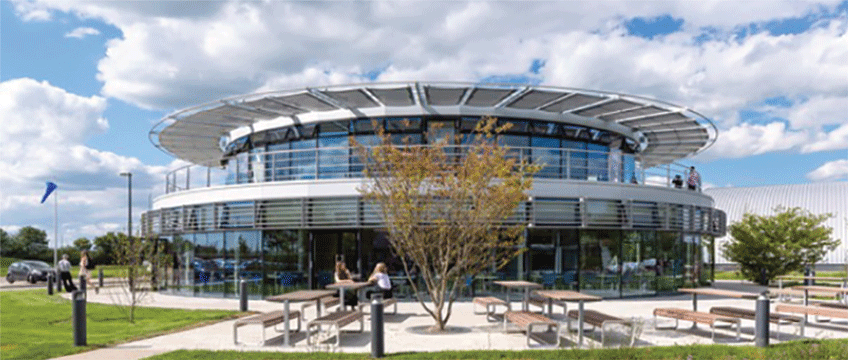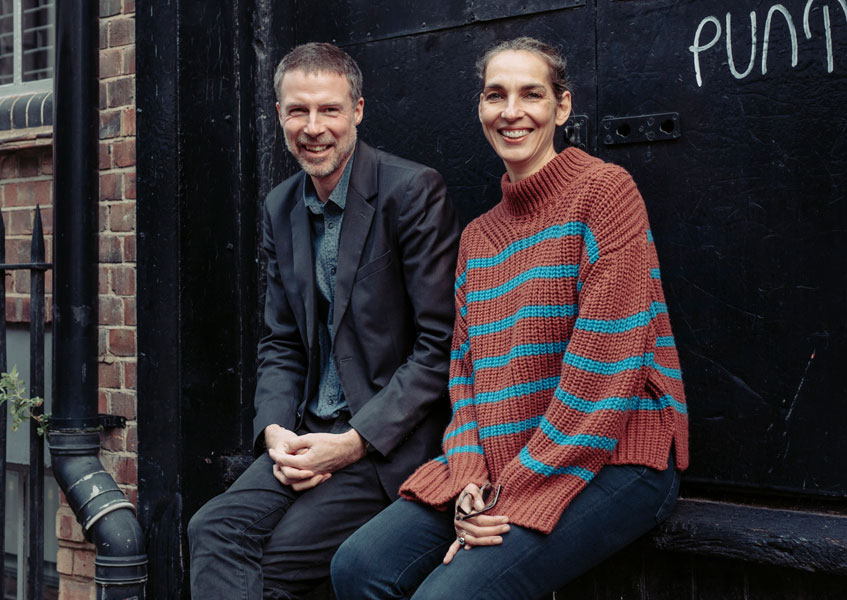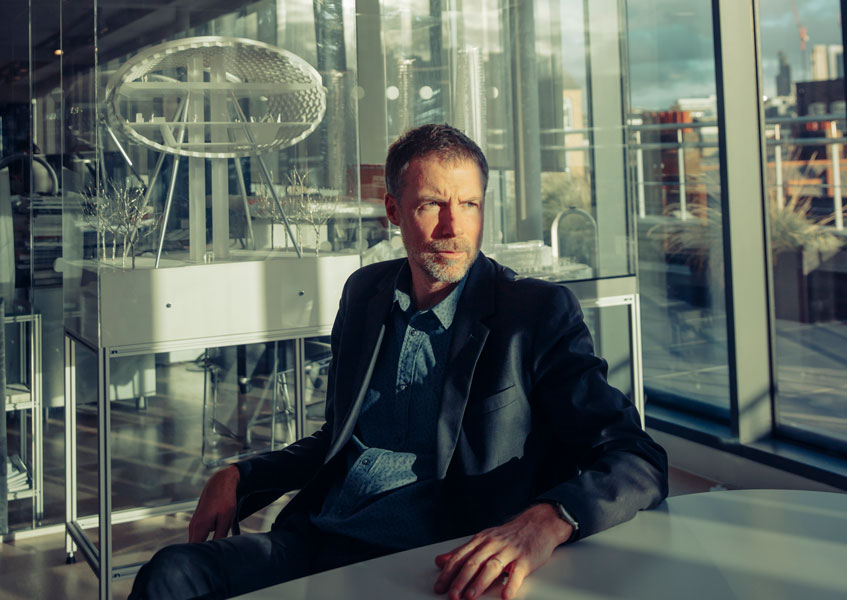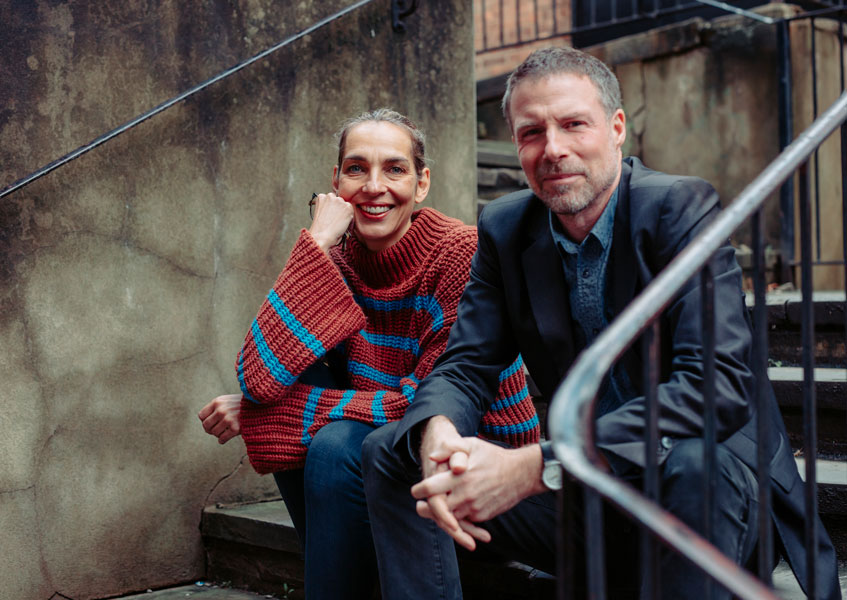There is more to smart buildings than technology. For architectural practice WilkinsonEyre, a focus on the complicated world of over-site development means that structure, not sensors, lies at the heart of its approach to smart design – and for good reason. In cities like London where land and space to build is so limited, what could be smarter than developing over existing infrastructure? Smart, yes. But not for the faint-hearted.
One of the world’s leading architectural firms, WilkinsonEyre is known for projects including Gateshead Millennium Bridge, Guangzhou International Finance Centre in China and the redesign of Battersea Power Station. But while some of the practice’s less iconic schemes might not be as headline-grabbing, they give the likes of Battersea a run for their money in the complexity stakes.
Take the firm’s design for Landsec’s 21 Moorfields project – a 564,000 sq ft air rights development above Moorgate Underground station that is set to become Deutsche Bank’s London HQ. A bridge-like structure soaring 55m over and above the station, the pressure was on from the outset to get the foundations in place without disrupting any of the three Tube lines, City Thameslink sidings or two Crossrail tunnels.
“The piles we had to put in are the highest capacity in all of London,” says Giles Martin, WilkinsonEyre’s director overseeing the 21 Moorfields design. “And we had to do it without disrupting any of the lines. It costs about £90,000 an hour if you stop the Circle Line, so you really don’t want to be messing with that.”
But for all the headaches over complicated structures and nail-biting structural manoeuvres, this sort of development could be the answer to creating new space in high-density cities around the world. So who better than Martin to explain how you can effectively “balance 1,500 German bankers on a single column”? And when it comes to wider innovative design, WilkinsonEyre director Yasmin Al-Ani Spence, who leads on the practice’s work with Dyson, including its campus expansion and the Dyson Institute of Engineering and Technology, is perfectly placed to shed some light on how occupiers around the world are ensuring their developments are fit for purpose in fast-changing times.
Managing challenges
Over-site development, says Martin, is effectively building a bridge over station. Given WilkinsonEyre’s areas of expertise have been designing bridges and stations – including the Jubilee Line extension – since the 1990s, combining the two was something the practice felt comfortable with. He adds there will likely be a growing need for this sort of skill set in cities the world over.
“Take London as an example,” he says. “Our developer clients just can’t find sites. London is already built. It is rare you will find, say, a King’s Cross. There are just no big sites so people recycle old buildings. But then there is building over existing infrastructure, if you can manage all of the challenges that go with that.”
It costs about £90,000 an hour if you stop the Circle Line, so you really don’t want to be messing with that
Portraits by Will Bremridge
Martin has been working on the air rights over Moorgate station for more than seven years. Landsec bought the rights in 2012. It has been WilkinsonEyre’s job, along with structural engineer Robert Bird Group, to create a space fit for one of the world’s leading finance occupiers.
“Deutsche Bank has taken on a 25-year lease so you will have site where the bottom is a new Crossrail station and the top is a new banking HQ. It is an interesting move from Deutsche Bank because there has been some criticism of other banks taking up big chunks of London, sometimes pulling several blocks together. But here we are on the roof of a station that was otherwise free and unoccupied.”
The epitome of smart in terms of space, the challenges are not to be underestimated. “Crossrail told us they couldn’t believe we would be able to build something over the top of the station,” says Martin. “Putting the foundations in on the north and south sides of Moorgate and creating the new HQ like a bridge arching over the top of the site creates a great public space on top of the station, but to do that we had to minimise the number of columns we used and so there is one that literally holds up a third of the new suspended building on its own. It’s true that 1,500 German bankers are balanced on it.”
Being a bit clever
It’s not easy designing and developing like this, but it is going to become increasingly necessary says Al-Ani Spence. “You take elements of placemaking, infrastructure, new space and pedestrian-friendly public realm and you bring it all together to create something we need,” she says. “We have run out of space. Not just in London. And when we think creatively and innovatively about future projects, we can utilise the space to be the best it can be and we can create something that is not just useful, but better than it was before. Over-site development is one way we can enhance original infrastructure, whether that’s in London with projects like 21 Moorfields or in New York with projects like the High Line. It is just about being a bit clever and not set on everything being so grounded.”
This, she adds, is truly smart. While developing like this doesn’t replace the need for tech-enabled buildings or cities, it does force people to think differently and look more to the future. She says that this is something that developers are – or at least should be – happier to pay for than they may have been in the past.
“It is not like 20 or 30 years ago when you could put in a couple of high-rises and no one would have thought about getting a positive space in between,” she says. “That’s because it wasn’t required, and developers wouldn’t have paid for it. But now that free space, the public realm, it is becoming a positive asset. Good for the developers and, of course, a crucial element within any smart city.”

What people want is changing, she says. That means what developers want to deliver is changing and architects need to respond. This, she adds, goes beyond over-site development but is tied into a much wider issue around innovative design. Times are changing fast, and flexibility is key.
“We used to build for 100 or 200 years and now we build for 30 years. What is happening right now is that a lot of buildings are coming to the end of their first shelf life – that isn’t just in the UK but globally. So how do you plan what goes into the new iterations of these buildings now so when the next architects come along in 25 years it’s a bit easier?”
Flexibility plays a huge role here but so too does the attitude of the occupier. WilkinsonEyre’s lead on Dyson projects Al-Ani Spence says working with a forward-thinking company on building design makes a big difference.
“We have been working with Dyson for 22 years. One of the more recent schemes, the modular student housing project at the Dyson Campus in Wiltshire, is a project where we could really push ourselves to do something different. We could do that because we have a client here who is very open-minded. With Dyson, things tend to happen very quickly. [Founder] James Dyson is very good and he thinks very clearly about things. The rest of the Dyson campus is in the middle of a large industrial site and he realised that if he was going to attract the best students here at the age of 18, competing with so many other places for engineering, what would make them stand out. He was keen the accommodation was different, high quality and interesting. So that’s what we did. Every student has their own pod, their own entrance. But the main point is that the focus from the occupier made all the difference.”
Another “ambitious client”, she says, is Crown on the sprawling Barangaroo project in Sydney. It is a particularly important scheme for the practice as it prepares to open a new Australian office at some point this year.
Such a varied, widespread approach to design, location and skill set is no coincidence, say Martin and Al-Ani Spence. “We encourage it and we are proud of it,” says Al-Ani Spence. “We don’t have a house style,” adds Martin. “That’s true. But there are themes that run through what we do. Our approach is very pro-engineering, pro-technology and pro-public space.”
Smart.
The history of WilkinsonEyre
Chris Wilkinson set up Chris Wilkinson Architects in 1983. Jim Eyre, a former colleague, joined him and became a partner in 1987, and WilkinsonEyre was established in 1999. Today, the practice has 12 directors who work on projects individually or together, sharing skills and experience. Current projects include the Compton and Edrich Stands at Lord’s cricket ground, a new Centre for Horticultural Science and Learning for RHS Garden Wisley and towers in London, Sydney and Toronto.
To send feedback, e-mail emily.wright@egi.co.uk or tweet @EmilyW_9 or @estatesgazette



















